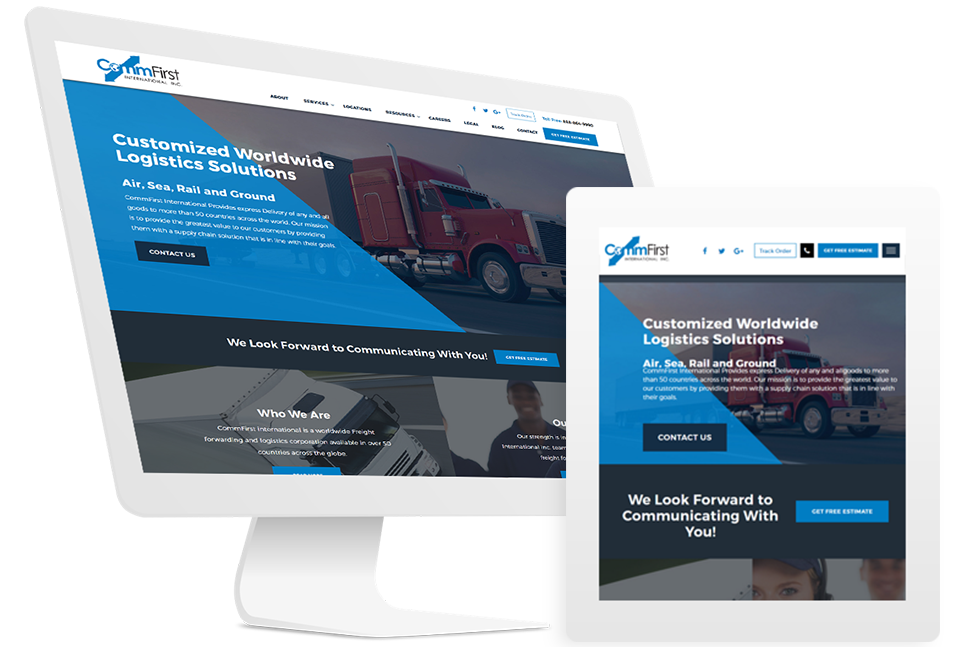Responsive Website Design Services to Boost Your Online Identity
Responsive Website Design Services to Boost Your Online Identity
Blog Article
Top Tips for Producing an Impactful Internet Site Style That Converts
In today's digital landscape, the significance of an impactful website style can not be overemphasized, particularly when it concerns converting visitors into customers. To achieve this, one must consider a selection of aspects, consisting of comprehending the target market, focusing on customer experience, and optimizing for mobile systems. The calculated usage of compelling call-to-actions and a well-defined visual hierarchy plays a vital role in directing individuals with their journey. As we check out these crucial components, it becomes evident that the success of your website pivots on greater than simply visual appeal; it needs a thoughtful approach to layout and functionality.

Understand Your Target Target Market
Understanding your target market is basic to reliable site layout, as it prepares for developing an engaging user experience. Recognizing that your individuals are, including their demographics, preferences, and actions, allows designers to tailor the website's material, layout, and functionality to fulfill details demands.
Carrying out thorough marketing research is essential in this procedure. Studies, meetings, and analytics can supply beneficial understandings into customer expectations and discomfort points. By assembling this data, developers can produce individual personas that represent various segments of the audience, ensuring that layout choices are educated and appropriate.
In addition, recognizing the target audience assists in choosing appropriate style aspects such as color pattern, typography, and images that resonate with individuals. A website that talks directly to its target market fosters a sense of link and trust fund, urging longer brows through and higher conversion prices.
Ultimately, a user-centered strategy to website style not only enhances user complete satisfaction but likewise sustains organization goals by driving interaction and loyalty. By prioritizing the requirements and preferences of the target audience, a site can properly offer its purpose and achieve desired end results.
Prioritize Customer Experience
To enhance the overall performance of a web site, prioritizing customer experience (UX) is important (Website Design). A well-designed UX guarantees that site visitors can browse the website easily, find information quickly, and engage with material meaningfully. This leads to increased individual complete satisfaction and greater conversion prices
Begin by carrying out instinctive navigating. Menus must be realistically structured, allowing customers to find essential areas of the website with marginal effort. Uniformity in layout components, such as color design and typefaces, promotes experience, which is essential for maintaining customer engagement.
Furthermore, take into consideration the loading rate of your web site. A hold-up of just a couple of secs can bring about substantial drop-offs, as individuals are less most likely to wait on a slow-loading page. Simplifying images and enhancing code can enhance performance and maintain site visitors.
Moreover, clarity in content discussion is crucial. Use concise, appealing language and damage up message with visuals to enhance readability. By focusing on user experience, you not only produce a much more delightful atmosphere for visitors yet likewise enhance your brand's credibility. Eventually, a concentrate next page on UX is an investment in the lasting success of your internet site.
Maximize for Mobile Devices
Optimizing for mobile phones is critical in today's electronic landscape, where a raising number of customers access websites through smart devices and tablets. A mobile-friendly style not just enhances customer experience however also plays a substantial function in improving internet search engine positions. To accomplish this, it is necessary to adopt a responsive layout that instantly adjusts to different display dimensions and alignments.
%20%5B60%25%5D.jpg)
Filling rate is an additional critical factor; mobile individuals are typically less client and expect rapid accessibility to details. By prioritizing mobile optimization, you make certain that your web site remains affordable and properly engages a wider audience.
Use Engaging Call-to-Actions
An internet site's efficiency typically pivots on its capability to lead site visitors towards preferred activities, making engaging call-to-actions (CTAs) important parts of style. CTAs offer as the essential points that direct individuals to engage with the site, whether that suggests making a purchase, authorizing up for a newsletter, or downloading a resource.
To produce efficient CTAs, clarity is extremely important. Usage succinct language that plainly communicates the activity you want the user to take.
In addition, consider using directional cues, such as arrowheads or pictures, to direct individuals toward these switches. By focusing on these components, companies can substantially improve individual engagement, driving conversions and ultimately accomplishing their internet site's goals.
Concentrate On Visual Pecking Order
Effective site layout depends heavily on a well-structured visual pecking order that overviews individuals with web content advice seamlessly. By organizing components in a manner that focuses on information, developers can boost user experience and assist in decision-making. This involves utilizing size, color, contrast, and spacing tactically to attract interest to the most essential elements of a website.
The usage of larger fonts for headings and subheadings establishes a clear distinction in between different areas, allowing customers to scan material easily. Additionally, utilizing contrasting colors for switches and calls-to-action can record customer focus and motivate communication. Whitespace is one more necessary element; it protects against mess and makes it possible for customers to focus on crucial messages without distractions.
Pictures and graphics must enhance the text while additionally sticking to the established power structure, strengthening the total message (Website Design). Uniformity in design aspects, such as shade plans and typography, further strengthens the visual hierarchy, making navigating user-friendly
%20%5B60%25%5D.jpg)
Final Thought
To conclude, efficient site design demands an extensive understanding of the target audience, prioritization of individual experience, and mobile optimization. The strategic usage of compelling call-to-actions and a distinct visual power structure better boosts customer involvement. By carrying out these concepts, websites can achieve greater conversion rates, making sure that design elements not just bring in visitors yet likewise assist in seamless navigation and interaction. Inevitably, a well-executed website layout functions as an important element in driving user activities and accomplishing service purposes.
Report this page